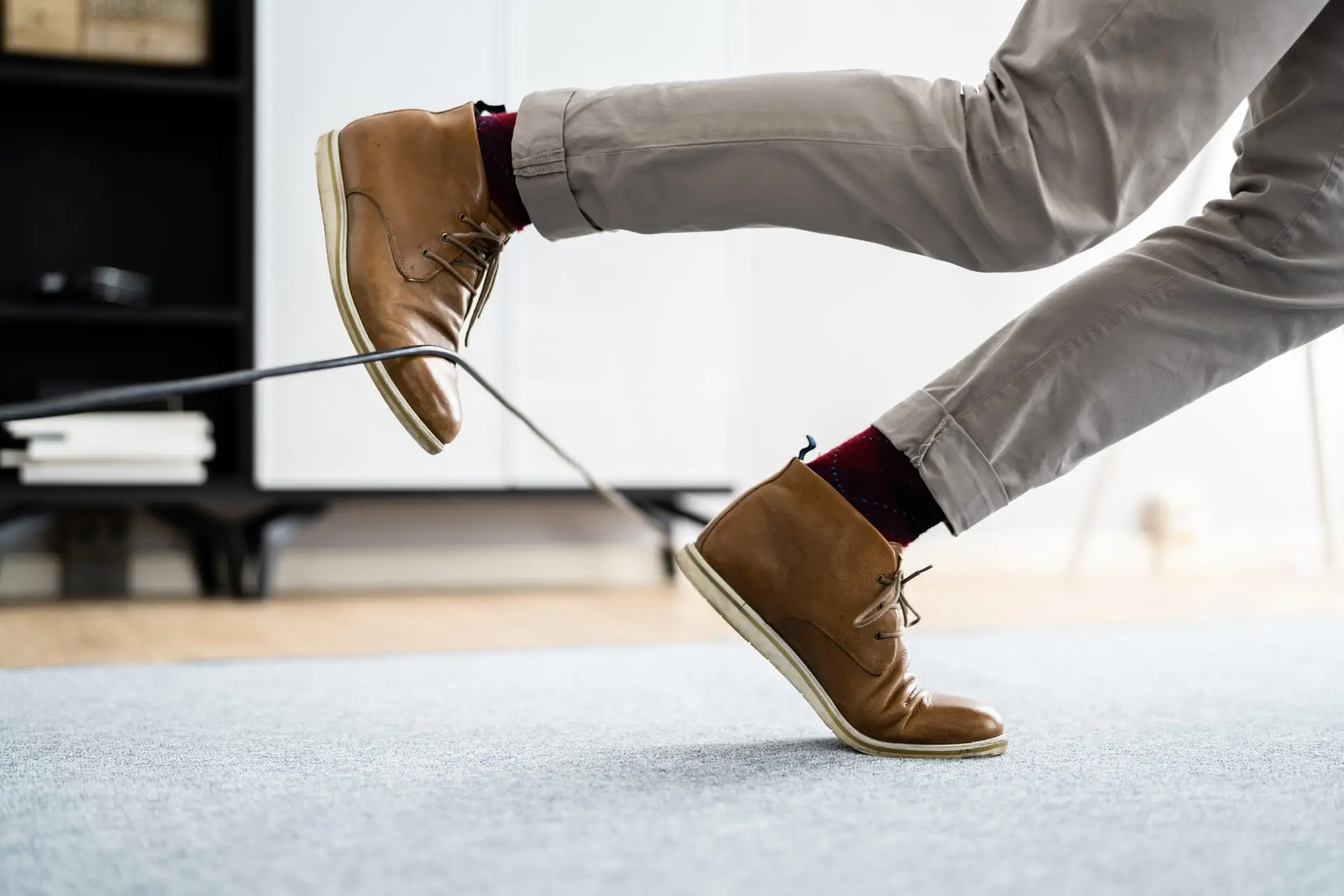If your house is anything like mine, it’s overrun with cords and wires. They snake over every open surface, connecting video game consoles to the TV, the TV to an extension cord, and the extension cord to the wall. This cacophony of cables is frustrating at best, but when left unchecked, cords and wires can be a dangerous tripping hazard—and when kids are running through a house drowning in cords, that danger is even greater.
Here on the Troomi blog, we’ve already talked about how to keep your kids safe from outlets and how to prevent pets from chewing on cords. What we haven’t touched on, however, is how to protect the whole family (including pets!) from tripping on loose cables. The best way to do this is by protecting the cables themselves.
So what are we waiting for? Let’s make like an Olympic swimmer and dive into Troomi’s how-to guide on cable trip hazard prevention.
Why Is It Important to Protect Cables?
Before we talk about how to protect your cables, let’s talk about why it’s important to do so.
You’ve probably already thought of the first reason: tripping over cords could lead to serious injury. According to the CDC, tripping over stray clutter can cause injuries such as “sprains, strains, bruises, bumps, fractures, scratches, and cuts.” Tripping may not sound too serious to us adults, but it’s a different matter for children. Their bodies and bones are still developing, and as a result, kids have a higher chance of sustaining serious injuries, like broken bones, when they fall.
Protecting wires also keeps your family safe from electric shocks. If cords have exposed live wires, they may create a zap when touched. This means that when kids trip over an exposed cable, they could shock themselves with a bolt of electricity. Electrocution is no joke. To make sure that you’re prepared for potential shocks, check out this article from Healthline.
Safeguarding your kiddos from harm isn’t the only reason to protect your cables, though. Protecting cords also prevents your cords from sustaining any unnecessary wear and tear. When cords are left scattered on the floor, they’re subject to getting tangled and trampled on. Finding replacements for damaged wires can be a pain, but protecting your stray cables can really extend their lifetime. Leaving wires susceptible to wear and tear may also compromise a cable’s protective covering, exposing the inner live wires.
How Can I Protect Cables to Prevent Tripping?
Now that we know why it’s important to protect your cords, let’s look at a few ways you can do this:
- Strap cables together with velcro bundlers. When you have a ton of wires in one area, it’s difficult to know how to keep them organized and out of the way. Cable bundlers, like these Velcro brand ones, make it easy. To tame a web of wires and cords, simply wrap the strap around a group of cords, then secure them away from highly trafficked areas. Voila!
- Secure cords with adhesive backed cable clips. If velcro bundlers aren’t your speed, try protecting your cords with cable clips, like these ones I found on Amazon. These clips make it easy to secure cables to out-of-the-way places like the wall or ceiling. Just take off the adhesive backing, stick the clip to a flat surface, and snap the cable into place.
- Conceal wires with a cable concealer. Cable concealers make it easy to protect your cables and your kids while maintaining a clean and organized living space. All you need to do is thread your cables through the hollow channel, then secure the concealer somewhere safe. Easy!
- Cover heavy duty cables with a cable protector. Professional cable protectors are a bit more heavy duty than the previous options, but that just means that they’re all the more reliable. These cable protectors are great for the workplace, the garage, or your chalk-art-filled front driveway.
- Tape them up with good ol’ fashioned duct tape. You know it, you love it, and you’ve probably used it for anything from crafting a wallet to fixing a spontaneous leak. Covering wires with duct tape is a cheap and easy option for families on a budget. Just collect your cables into one place, then secure them to the floor or a wall with a long strip of duct tape.
Keep Your Kids—and Cables—Safe From Harm
Between televisions, video game consoles, and cell phone charging cables, it can feel like cords run your home. With all these wires, cable trip hazard prevention may seem intimidating—but it doesn’t have to be! With these simple tips, you can protect your kids—and your cables—from any potential harm.
We here at Troomi are dedicated to your kids’ safety, and that extends beyond protecting them from stray wires. Smartphones from Troomi Wireless make it easy for kids to explore technology, free from dangers like anxiety-inducing social media and adult content. Click here to learn a bit more about how Troomi can help your kids safely navigate our modern world.
Then, come back to the Troomi blog for more tech tips and tricks that you won’t want to miss!


